Overview
Numbers of ringed birds this year, more so than previous years, was dictated by poor weather. The cold winds in spring and westerlies in July/Aug and Oct/Nov had the same effect, moving birds away from Cornwall and reducing the numbers of birds ringed.
The usual slow start to the year. Not much was trapped until the 30th March when 46 Sand Martin and 12 Chiffchaffs were ringed. For the first time since starting ringing here in 1996 we didn’t catch a Willow Warbler during March. An early spell of a southerly airflow at the start of April produced a Woodchat Shrike on the 2nd, a roosting Scops Owl was accidentally flushed on the 4th and an Alpine Swift on the 7th. A Garganey on the 9th was followed by low numbers of migrants passing through on the recurring northerly wind during April and May. A break on the 20th April saw three blue-headed Wagtail and Turtle Dove on 28th April. Mark picked up the Yellow-billed Kite flying over on the 15th May. Night Heron was eventually added to the year list on the 17th May and a 2nd calendar year Glaucous Gull was still hanging on from the winter all month. The annual Red Kite passage occurred on the 17th with c.200 passing overhead, and a Golden Oriole was present on the 20th.
The breeding season seemed to be average to poor for recent years, with cold wet weather reducing Blackcap numbers dramatically. Very few local young birds were ringed.
The first signs of autumn came with the first young Grasshopper Warblers and a few Sand Martins passing through in early July. Like spring, the weather had a big impact on numbers, especially during July and early August when lots of early migrants leave the UK and Ireland. The weather conditions pushed these to the east of Cornwall, reducing by many thousands the number of migrants trapped.
The first notable catch wasn’t until the 18th July with 54 Sedge Warblers ringed and the first of six Melodious Warbler trapped on the 20th. Most Melodious Warblers at Nanjizal seem to get trapped around 11am, either birds coming in off the sea or late getting up. It wasn’t until the 15th August we managed to ring 105 Sedge Warbler. There was a Wood Sandpiper on 16th August followed by Melodious Warbler on the 17th. Another spell of settled weather on the 21st – 24th August saw Wryneck, Melodious Warbler and Nightingale trapped, and Bee-eater and Citrine Wagtail seen. With peak numbers of Sedge Warbler, Willow Warbler and Whitethroat long gone, the highest catch of Sedge Warbler was 107 on the 23rd August and Whitethroat and Willow Warbler numbers in the teens. The first Pied Flycatcher and Redstart and Tree Pipits also started to appear, but only the latter were in any number. A scarce bird in Cornwall, on 29th August an Icterine Warbler was ringed in the same area as all the records from the valley, the last tall trees before reaching the sea. The September weather was a lot better and ringing effort and birding coverage improved considerably. The biggest catch of the autumn came on the 2nd September with 320 ringed, including 115 Sedge Warblers and 110 Blackcap. The evening of the 2nd saw the wind turn to a light SE wind. The first few net rounds on the 3rd were busy with the usual species, though by 9am had quietened down and the SE wind had started to pick up. A Marsh Warbler and Thrush Nightingale were found in the nets at 9am and were assumed to have just dropped in. An Osprey went over on the 4th August. Another three Common Nightingales, two Wryneck and a Melodious Warbler were trapped between the 6th and 14th. For the second year in a row Aquatic Warbler was trapped (on the 11th) and a Barred Warbler and Rosy Starling were seen. The Red-backed Shrike seen on the 15th was likely the bird ringed on the 20th, when an un-ringed Melodious Warbler was seen in the bushes nearby. A nice control from Fair Isle arrived on the 23rd August, a 1st year Willow Warbler. From the 19th September the weather took a dip for normal migrants, with an Atlantic airstream keeping the wind well and truly in the west for most of the rest of the autumn.
A group of Welsh ringers come down for a week every autumn and this year it was the first week in October. As they knew the site I thought I would take the opportunity to meet up with my parents and brother in Norfolk. I have accepted that you cannot go through life flapping about missing something, and I do love north Norfolk. Their first morning out on the 2nd October produced a Melodious Warbler and a Yellow-browed Warbler and after a north-westerly blow on the 3rd, a Black and White Warbler was trapped on the 4th. A still morning on the 10th October seemed like a good morning to walk the fields around the valley, and turned up a vocal Buff-bellied Pipit. A Corncrake on the 13th was the first one for some time. A much appreciated break in the wind from the 15th – 25th October saw a record annual total of seven Little Buntings ringed. Goldcrest and Firecrest totals were up on last year and seem to be recovering. An impressive day on the 22nd saw a Blyth’s Reed Warbler and three Little Buntings ringed, and a Skylark count of 650 must be a site record. A Radde’s Warbler and Eastern Yellow Wagtail were present on 23rd October the wagtail saying into November. The nets were rarely opened in November due to the weather but there was the odd day when the wind dropped good numbers of Chiffchaffs were ringed, 146 on the 11th being the highest number. On the same day, 22 Goldcrests were also ringed and a Waxwing seen. The last session of the season on the 25th November was a good one with 46 Chiffchaffs, 20 Blackcap and Little Bunting ringed, and a 1st year Little Crake seen.
Three species were added to the Nanjizal list during 2023: Thrush Nightingale, Black-and-White Warbler, and Little Crake. This brings the Nanjizal list to 301 species since 1996.
Ringing Effort and Species Accounts
Nets were opened on 103 days during the year, the lowest since 2017 (97 days), and well below the 153 days in 2022 and the two highest annual totals of 167 in 1996 and 164 in 2021, and below the 28-year average of 124 days. The cold winds in spring and prolonged periods of strong westerly winds both during July/ August and October had a significant negative impact on the number of days that ringing could take place.
Sixty-nine species were ringed during 2023, slightly below the record of 73 species in 2018 and 2021, but above the 28-year average of 59 species. The Thrush Nightingale on the 3rd September and the Black-and-white Warbler on 4th October were new ringing species for the site, with the former also the first record for mainland Cornwall.
The total number of birds ringed during 2022 was 7,647, well down on the record annual total of 12,920 from the previous year. This brings the grand total across all years to 127,530 birds ringed at Nanjizal since 1996.
This fall in the annual total goes against the pattern of increasing numbers over recent years, the latter a result of improving habitat and ringing methods. Once ringing effort (in the form of number of ringing days) is taken into account, 2023 actually performed reasonably well with the 4th highest capture rate of any year, with only 2022, 2019 and 2017 better. This indicates that when the nets could be opened, the numbers of birds being caught were reasonably good.
The most frequently ringed species during the year were Blackcap (1749), Chiffchaff (1519), and Sedge Warbler (1484).
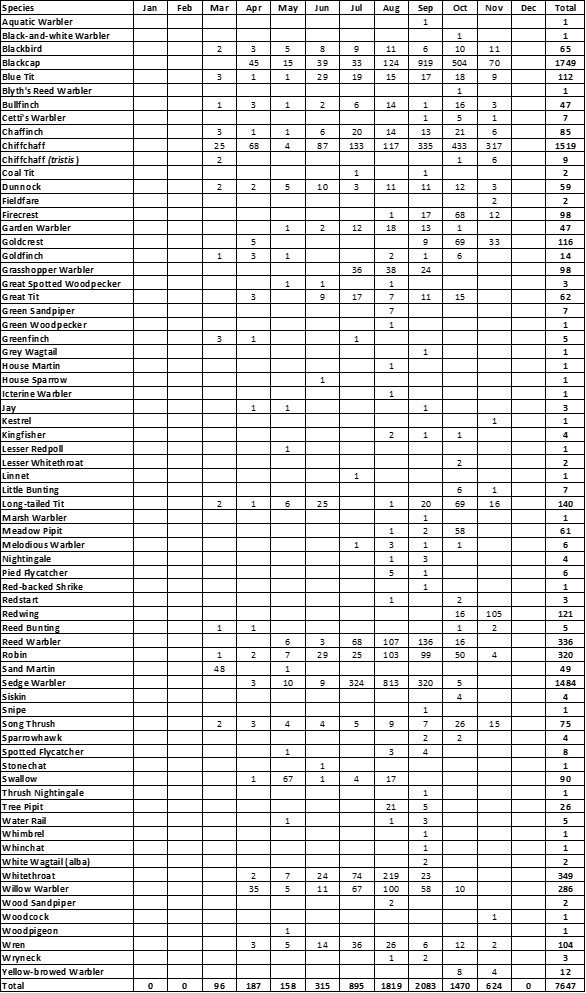
The Sedge Warbler ringing total of 1484 for 2023 was the lowest since 2017, and considerably less than the record breaking total in 2022. Taking into account ringing effort, 2023 had the third highest capture rate for Sedge Warbler, behind only 2022 and 2019. If only the July-September period of peak passage is considered, the 2023 capture rate for Sedge Warbler was better than average for the last ten years, though well behind the peaks of 2022 and 2019. August remains the peak month for Sedge Warbler, with by far the highest capture rate of any month. The proportion of immature birds ringed during the autumn was the sixth highest recorded, suggesting an above average breeding season.
The Blackcap ringing total for the year was 1749, the lowest since 2017, and well below the record total of 2983 in 2022. When ringing effort was taken into account, it was the 5th highest capture rate. September remains the peak month for Blackcap at Nanjizal. The proportion of immature Blackcap ringed during the autumn was the fourth highest recorded, suggesting a better than average breeding season.
The 1528 (including nine tristis) Chiffchaff ringed in 2023 was the second highest, following the 1720 ringed in 2022, and the capture rate during 2023 was the highest ever. August was the month with the highest capture rate, though only slightly ahead of July and September. The nine tristis Chiffchaff ringed during 2023 was substantially below the record 42 ringed during 2021. The proportion of immature Chiffchaff ringed during the autumn was towards the lower range of previous years, suggesting a relatively poor breeding season for the species.
The Willow Warbler total of 286 was the lowest since 2013, and substantially lower than the record 912 birds ringed during 2022 and second highest total of 764 ringed in 2021. Once ringing effort was taken into account, the capture rate was also the lowest since 2013, suggesting a rather poor year for the species. The peak months for Willow Warbler at Nanjizal were August, April and July. The proportion of immature Willow Warblers ringed during the autumn was the sixth lowest since 1996, suggesting a relatively poor breeding season.
The 2022 Whitethroat ringing total of 349 was the lowest for six years, and substantially less than the 666 ringed during 2021. Once ringing effort was taken into account, the 2023 ringing rate was the seventh highest ever. August is the peak ringing month for Whitethroat, with numbers dropping off sharply in September. The proportion of immature Whitethroats ringed during the autumn was the third highest ever (the two highest being in 2005 and 2015), suggesting a good breeding season.
The total of 336 Reed Warblers ringed during 2023 was the fourth highest ever, with the three highest preceding totals being in 2020, 2021 and 2022. Taking into account ringing effort, the rate of capture during 2023 was joint highest with 2022.
There were 98 Grasshopper Warblers ringed during 2023, the 7th highest total but well below the record of 189 ringed during 2022. Once the number of ringing days were accounted for the 2023 ringing rate was the sixth highest recorded for Nanjizal.
During 2023 47 Garden Warblers were ringed, the 4th highest annual total for Nanjizal, with the total number ringed each year remaining remarkably consistent since 2016. However, once ringing effort was accounted for the capture rate was the highest ever recorded.
The 12 Yellow-browed Warblers ringed during 2023 was below the norm for the last ten years, substantially better than the single bird in 2021, but a long way off the 100 ringed during 2016.
The 116 Goldcrest ringed during 2022 was about average for Nanjizal. Ninety-eight Firecrest were ringed during 2023 which, whilst well below the record of more than 200 in 2017, was the third highest annual total for the species. The numbers of Redwing ringed at Nanjizal (121) was well below the highs of more than 400 in 2021 and 2022, but above the average for the site. The 75 Song Thrush ringed during 2023 was slightly below average for the last ten years. It was the fourth highest annual total for Long-tailed Tit, with 150 ringed during 2023. With only 5 ringed during 2023, Greenfinch numbers remain much reduced since their peak in 2010 when over 150 were ringed.
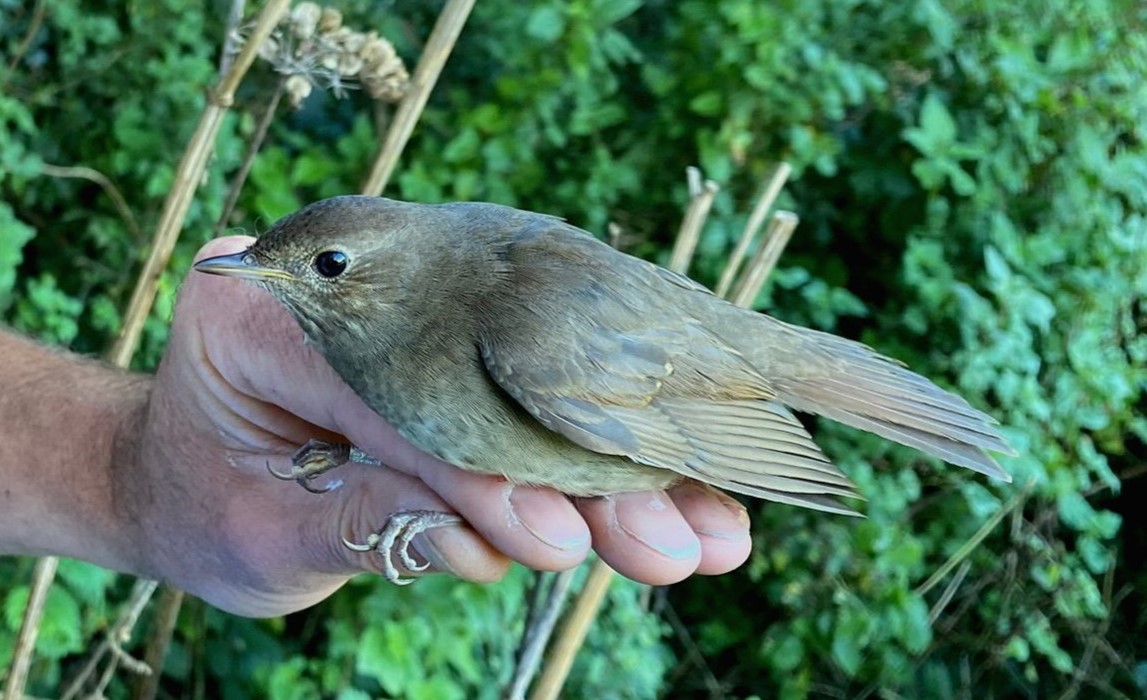

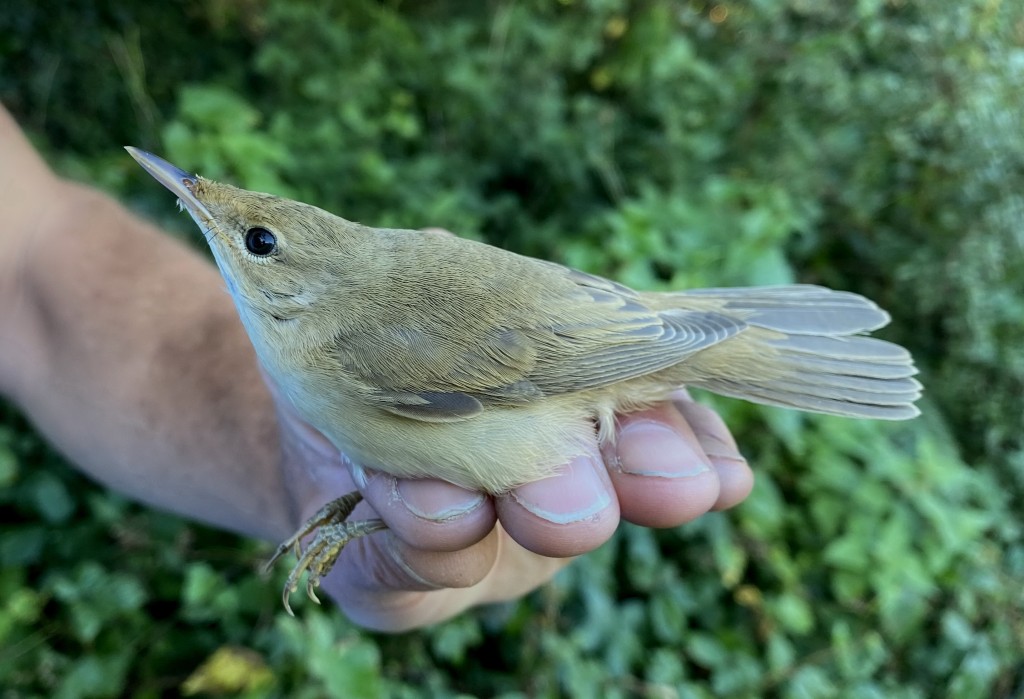

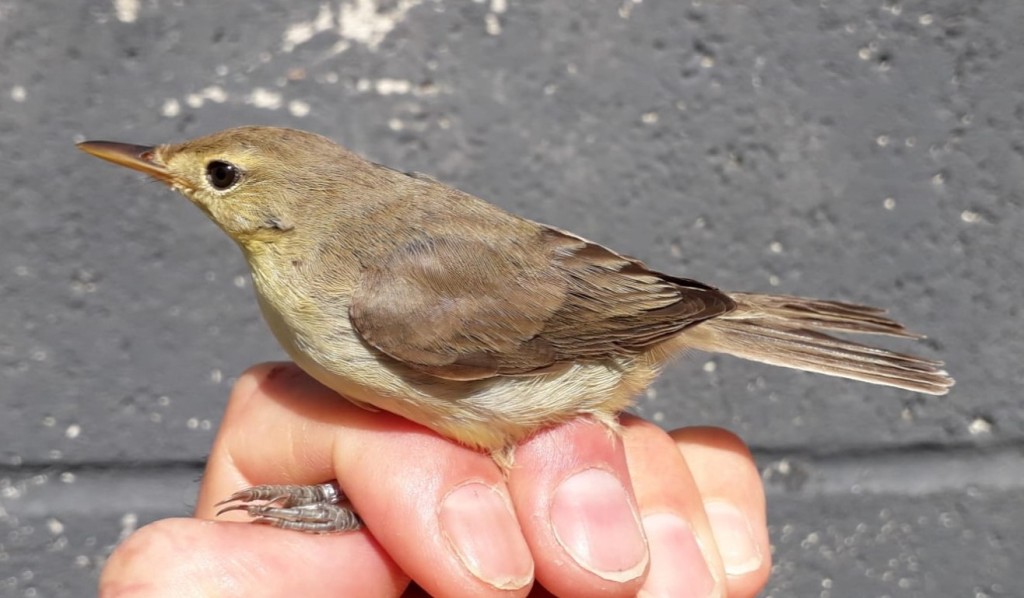
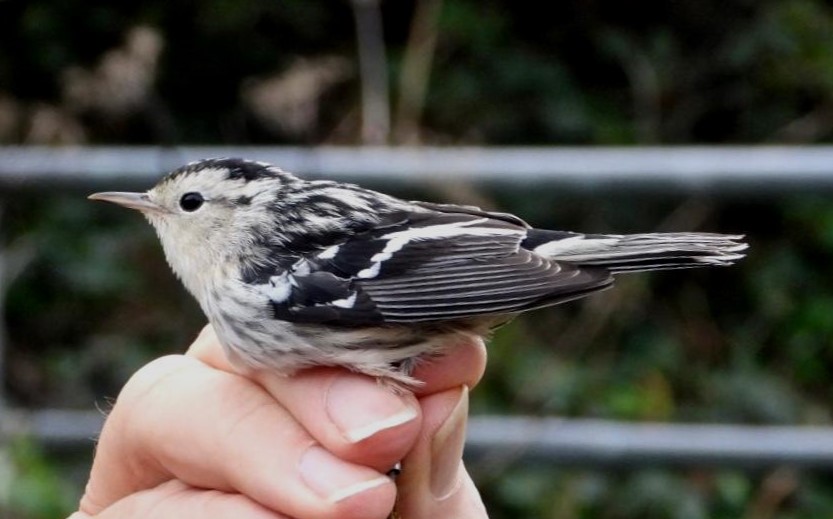
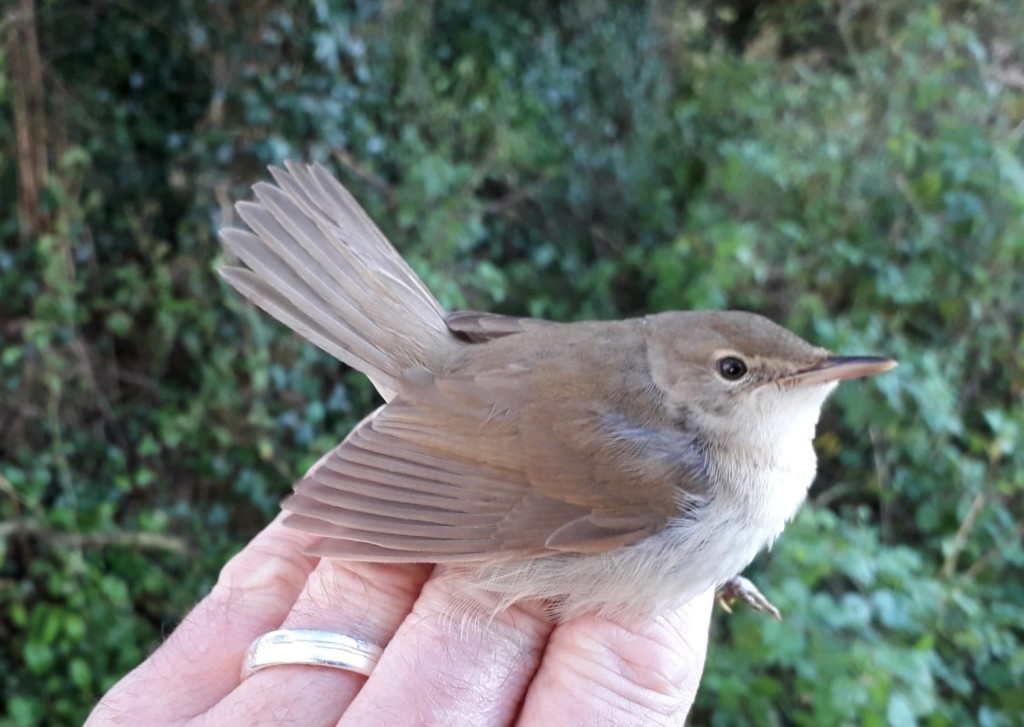
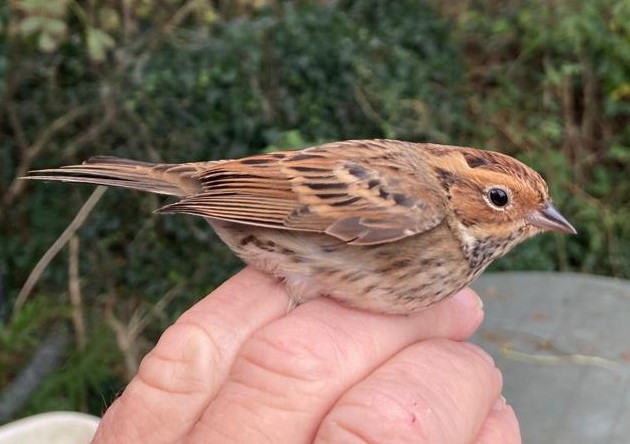
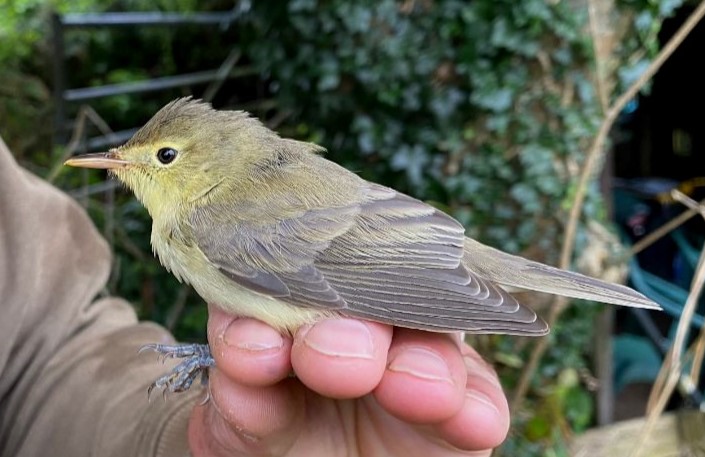
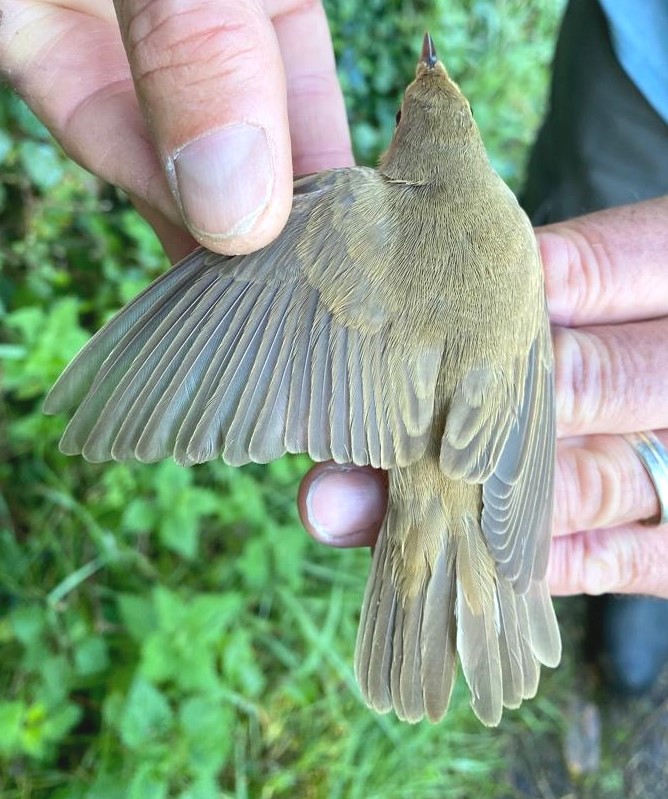
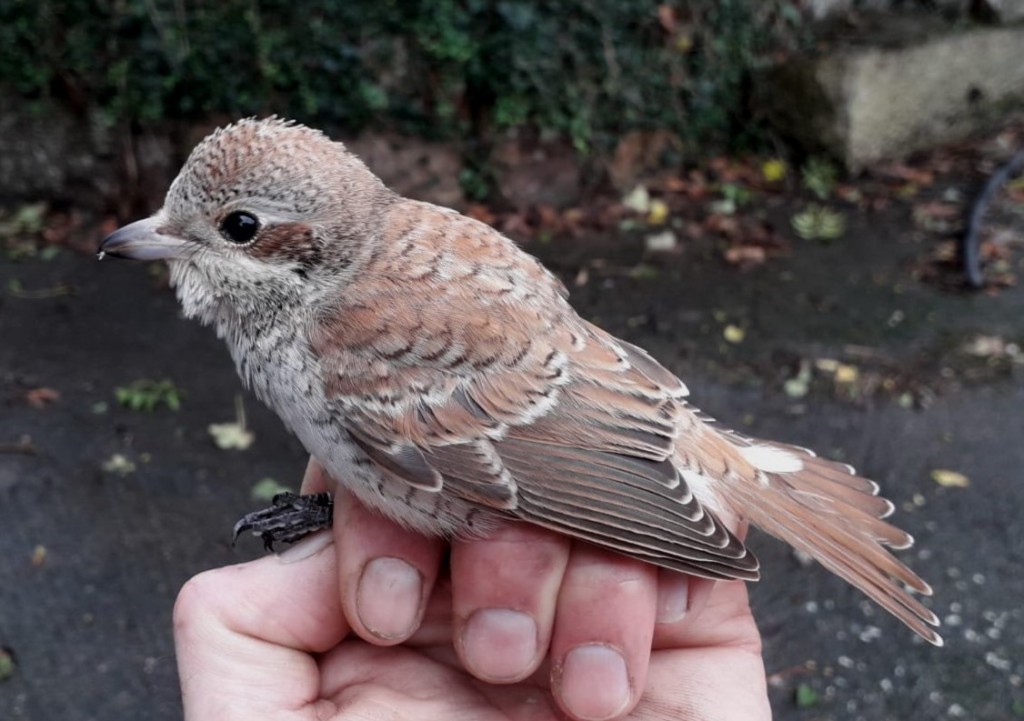
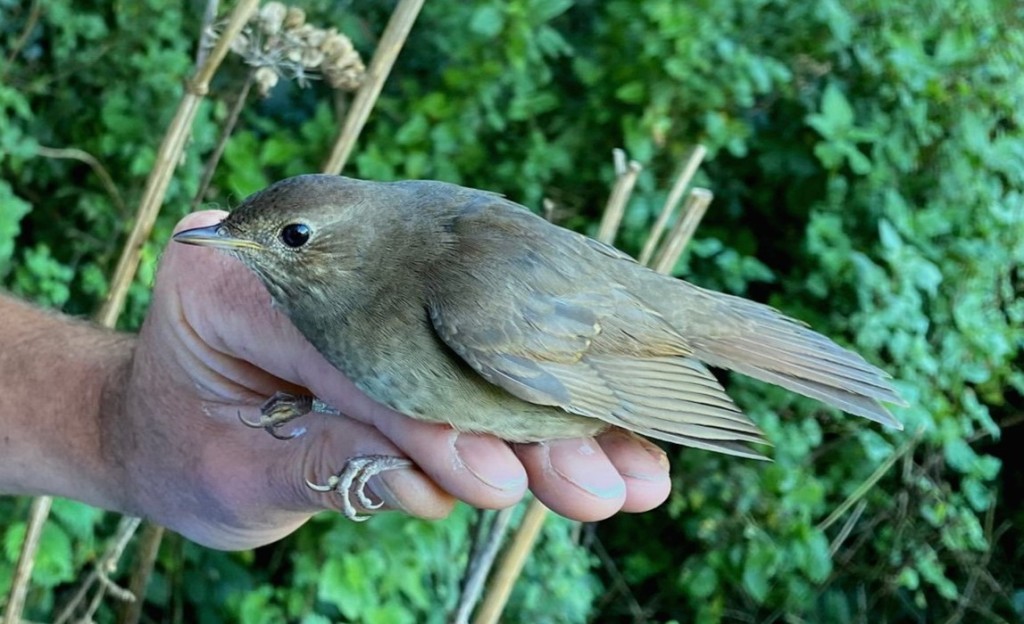
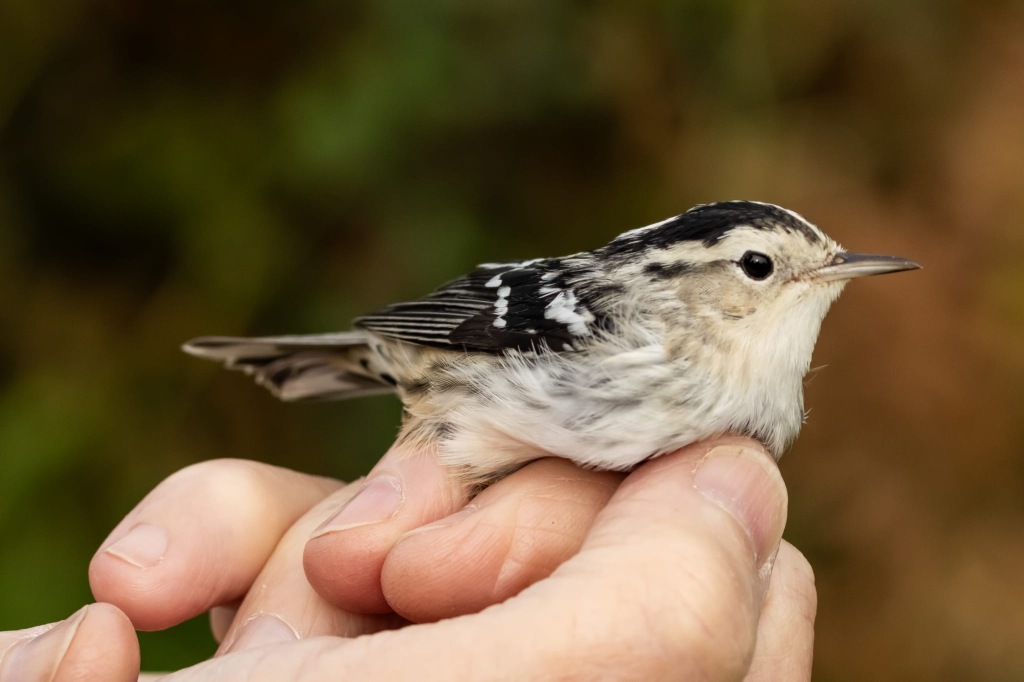
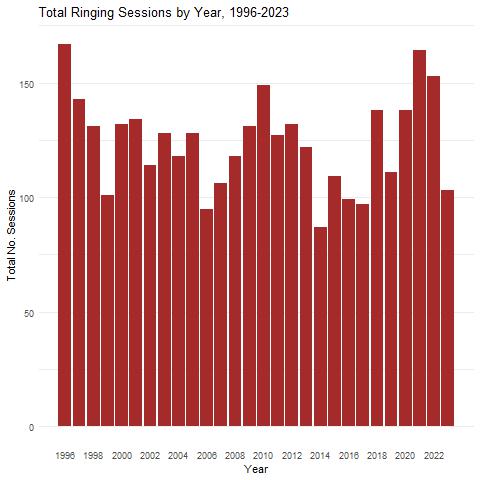
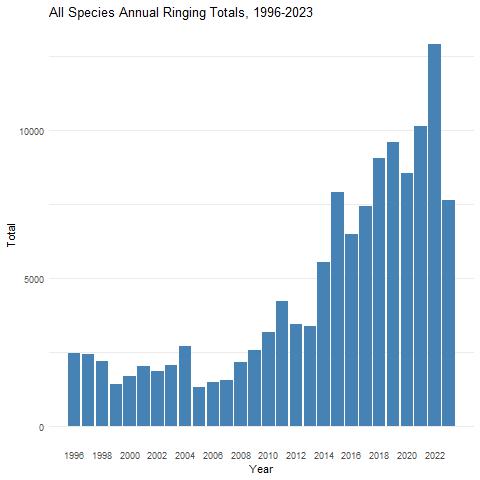
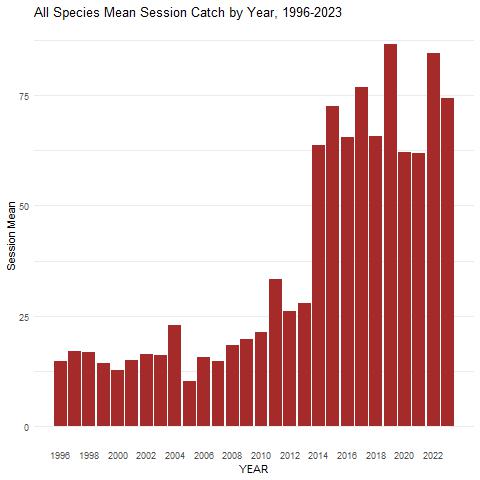
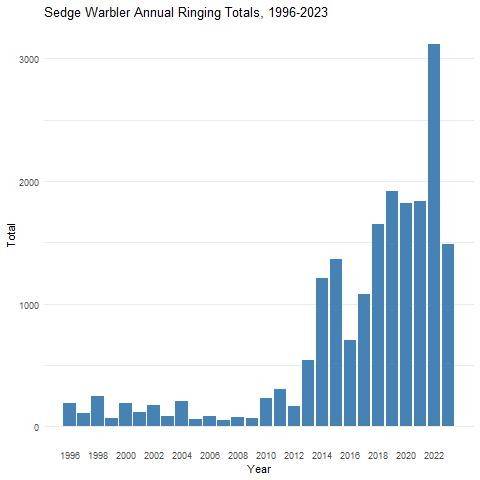
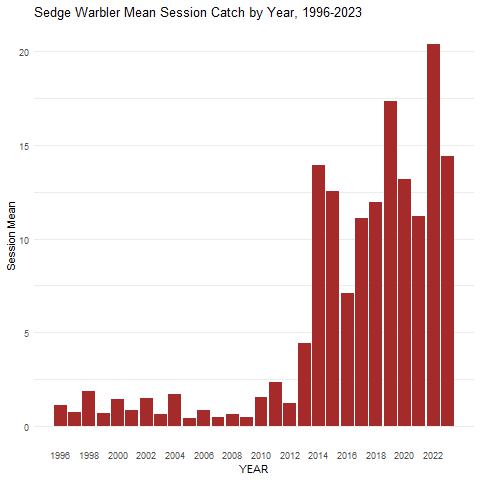
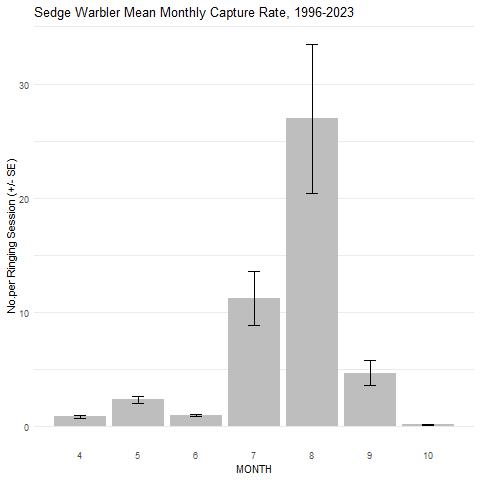
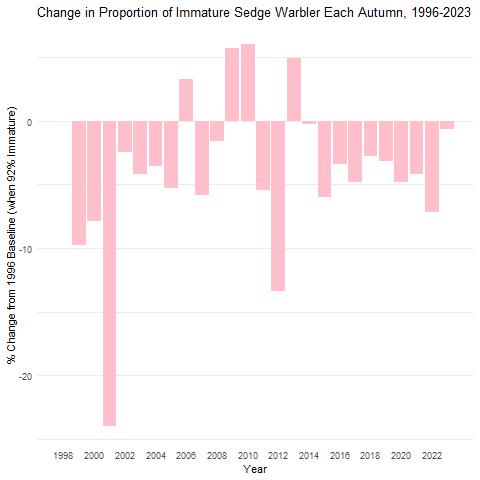
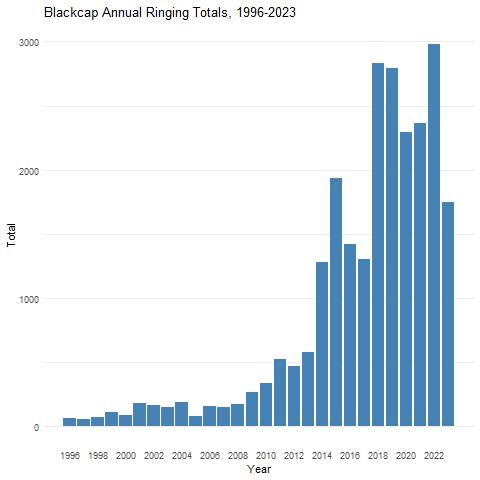
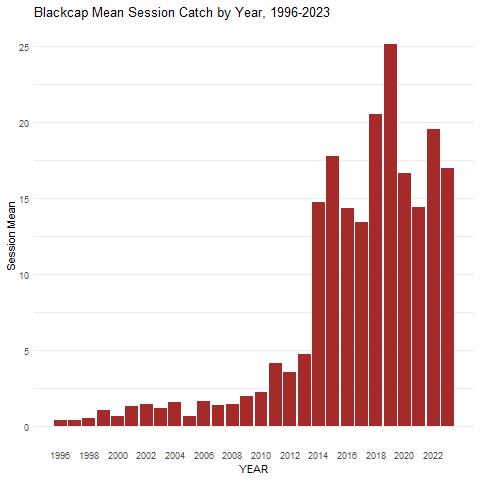

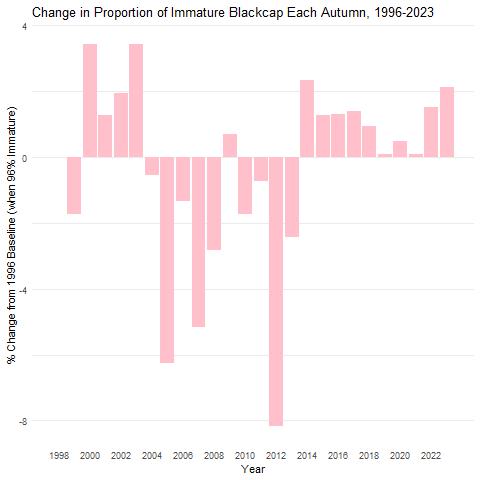
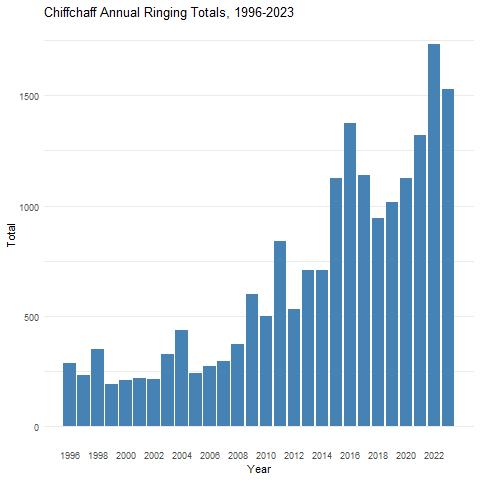

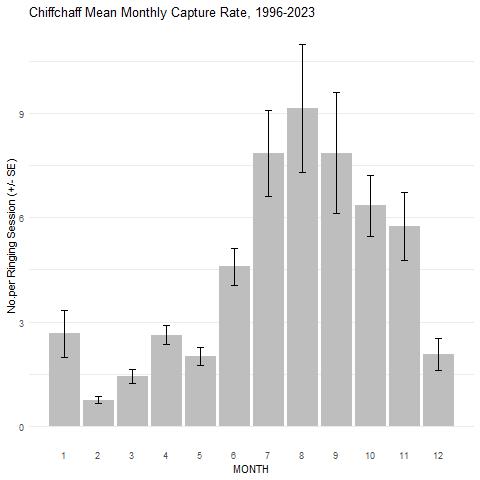
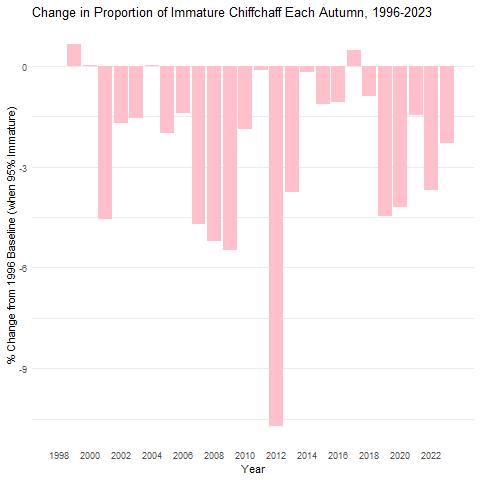
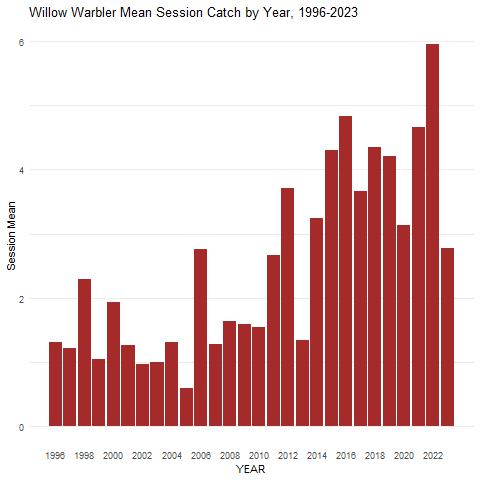
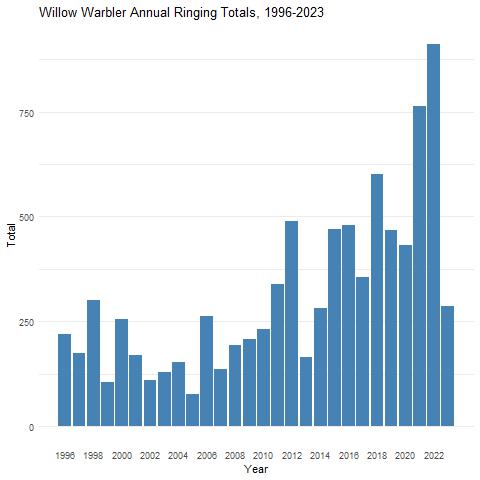
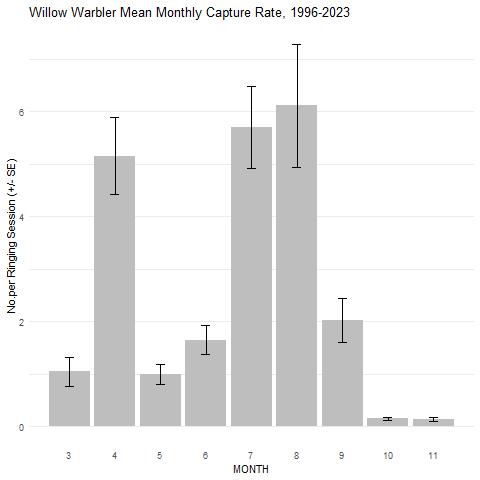
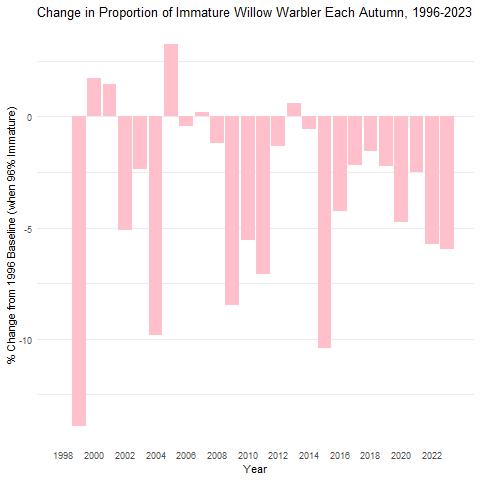
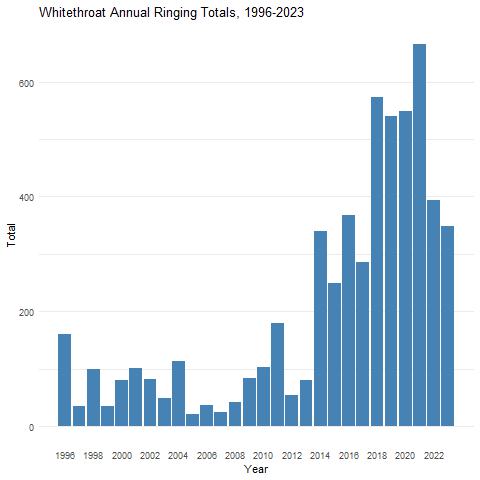
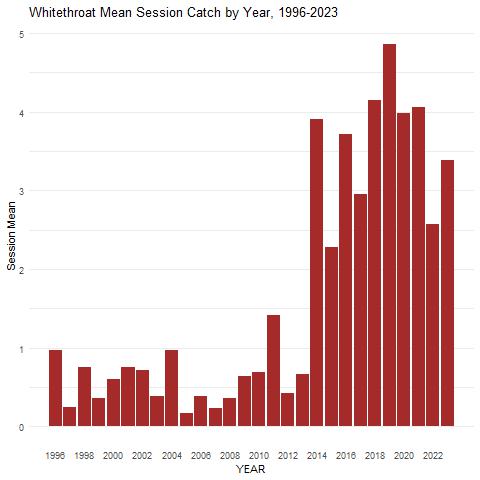

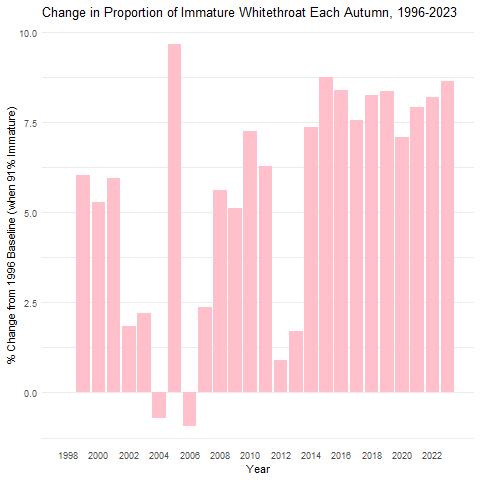

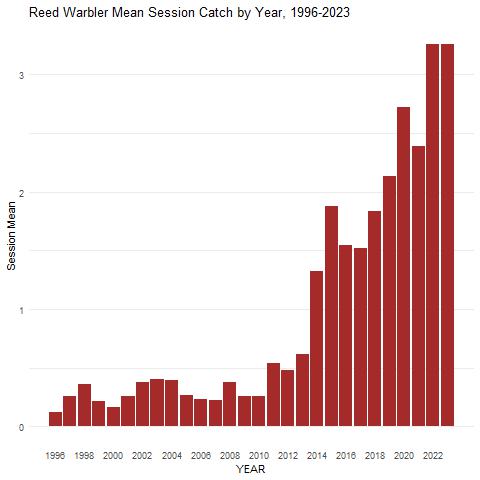

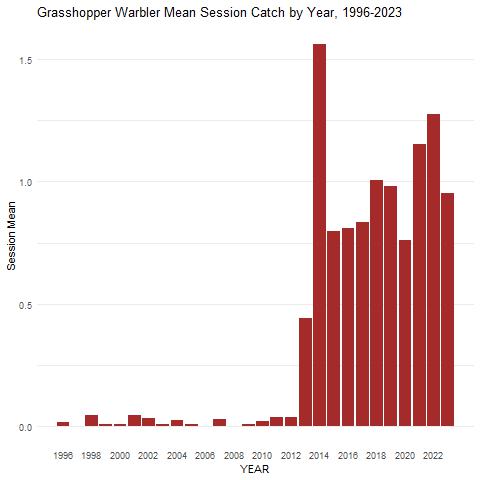
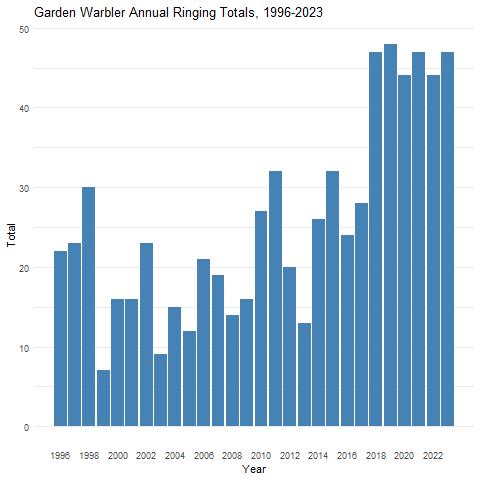
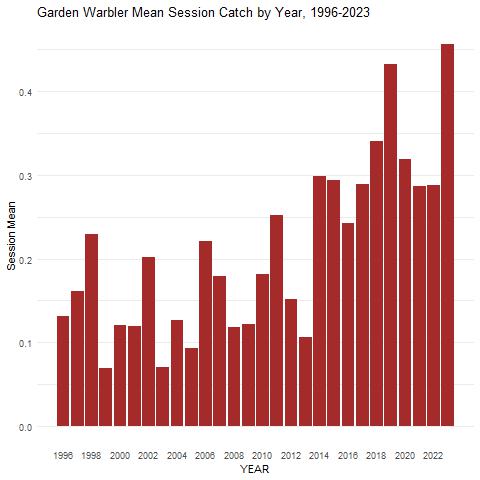
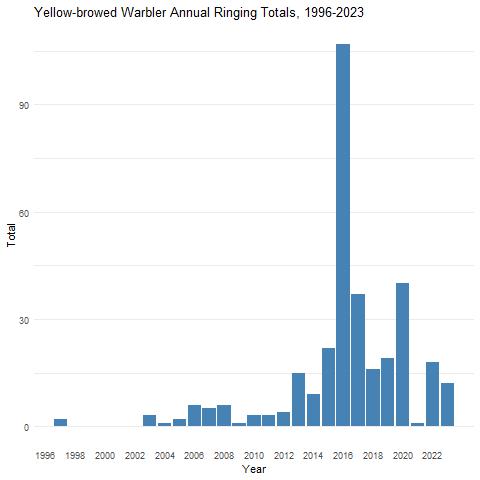
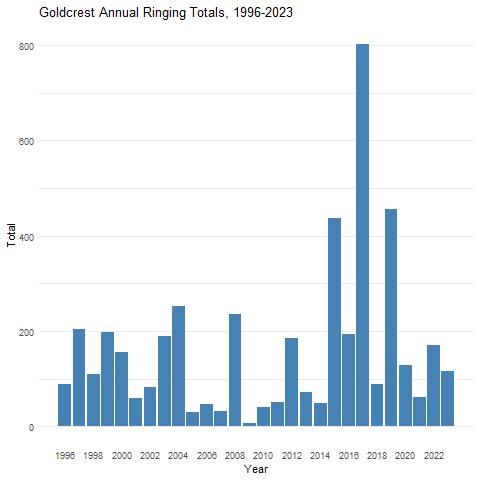
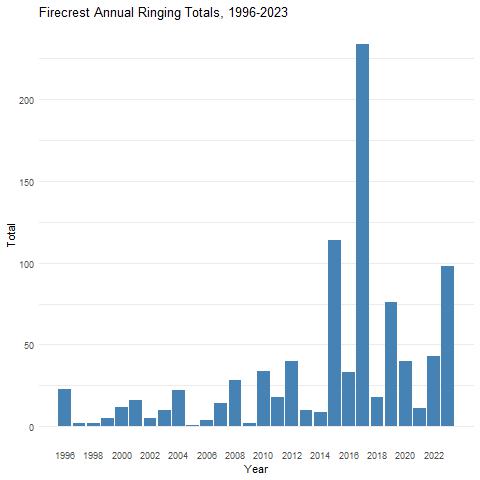
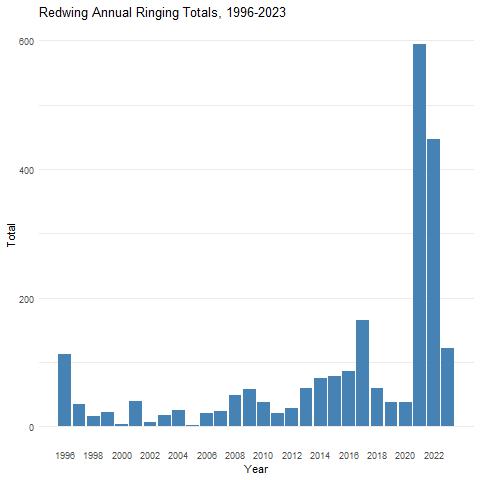
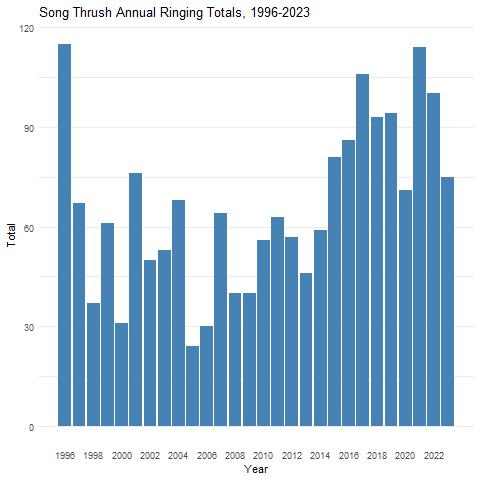
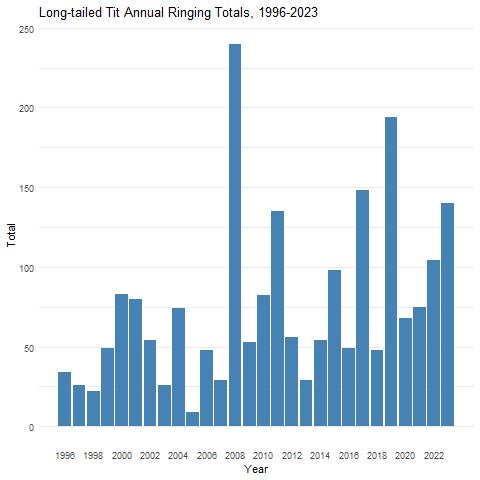
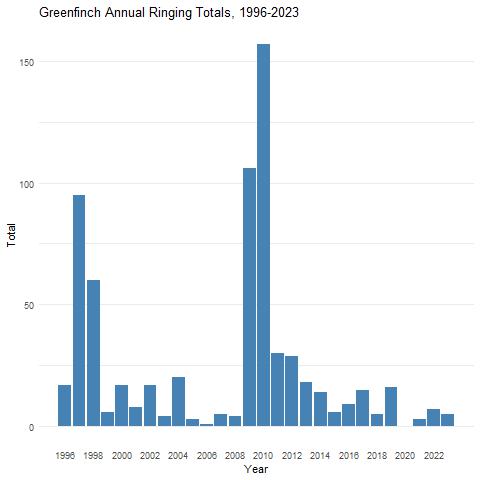
You must be logged in to post a comment.